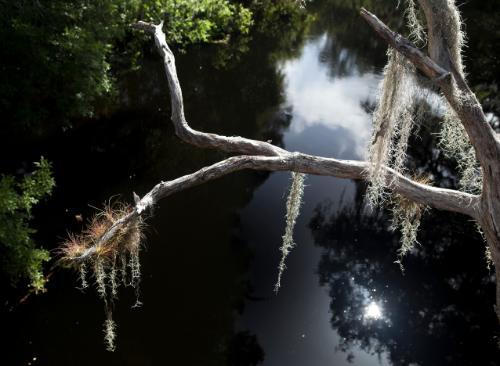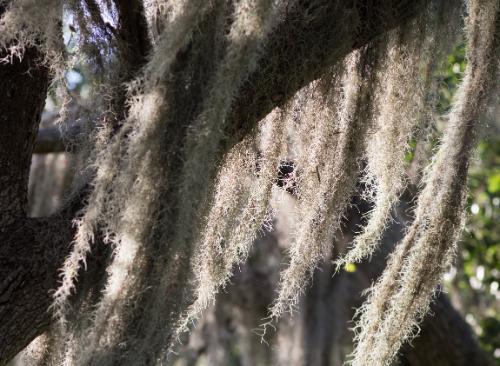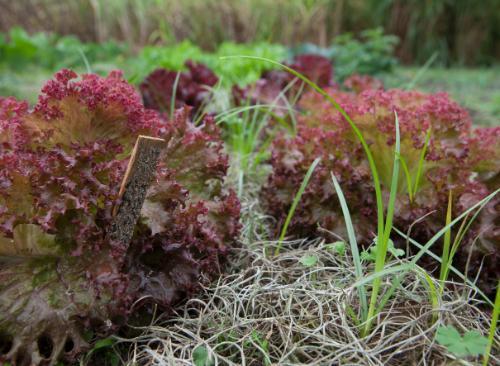how to draw a spanish moss on a tree
Spanish Moss
Hanging off trees and landscape plants, Spanish moss is a familiar part of Florida's environment. Despite its name, Spanish moss is not a moss but a bromeliad—a perennial herb in the pineapple family.
Most bromeliads, including Spanish moss, are epiphytes. Epiphytes grow on other plants, but do not rely on them for nutrients. They take nutrients from the air and debris that collects on the plant. Spanish moss has permeable scales that "catch" moisture and nutrients.

Spanish moss prefers moist environments, but its ability to trap water lets it survive dry periods. The plant can also go dormant until moisture conditions improve Spanish moss does not have any roots. It attaches to substrates by wrapping its stems around a surface. Also, it does not need roots for water and nutrient uptake, since all parts of Spanish moss have that ability. Spanish moss is commonly found on oak and cypress trees, but can grow on other plants as well.
Spanish Moss and Tree Damage

Many homeowners think that Spanish moss kills their trees. This is not the case because the moss is not parasitic. The only thing Spanish moss uses trees for is support.
If you observe tree decline after heavy infestations of Spanish moss, the trees are usually declining because of a different factor. In fact, tree decline can cause Spanish moss growth as the canopy thins and lets in more sunlight for the moss to grow.
Heavy moss on a tree can shade leaves and slow growth, but healthy trees will grow faster than the moss. Be aware that the moss can also weigh down and sometimes break branches.
If you want to remove Spanish moss, have an arborist remove it by hand. However, it will grow back after a while.
Uses For Spanish Moss

Spanish moss used to be harvested for stuffing material in automobile seats, furniture, mattresses, and even insulation in homes. Today it is sometimes used for stuffing or packing material, but it is more widely used for floral arrangements and mulch.
Songbirds build nests with the moss, and many other species use moss clumps for shelter, including bats, reptiles, and amphibians.
Be aware that chiggers are common in Spanish moss and may cause a rash on the skin if the moss is handled.
How to Get Rid of Spanish Moss
Since it can be such a pain and time-consuming job when it comes to killing Spanish moss, it is probably better (and worth the money) to call in an arborist or other tree professional to do the work for you, especially for larger trees in the landscape.
In addition to hand removal, the most cost-effective method of Spanish moss control is by spraying the trees with Spanish moss herbicide. Again, professionals are the best choices for this, as they are more equipped for handling and spraying large trees that would not be feasible to the typical homeowner.
There are generally three types of sprays used for killing Spanish moss: copper, potassium and baking soda. While all are reasonably safe to use and may even provide additional benefits, some may present challenges too.
Copper
Copper sulphate is one of the most recommended methods of Spanish moss removal. Copper is a common ingredient in most dry fertilizers and is an antifungal treatment. That being said, precautions must be taken when using this method to get rid of Spanish moss. Copper is the slowest solution, but it is the most thorough. As a systemic spray, it is deemed effective in targeting and killing Spanish moss. However, copper-based sprays can cause damage to tender growth on trees and any overspray may become potentially harmful to the surrounding landscape. It is recommended that trees be sprayed before budding out or later in the season. This is an ideal solution for use in more open areas too, rather than near houses because it has a tendency to stain. You should also check the label to make sure it can safely be applied to the trees with Spanish moss you want to treat. You can purchase premixed copper sulfate sprays or mix your own using one part copper sulfate and one part lime to 10 parts water.
Potassium
Using potassium for spraying trees with Spanish moss is another method that quickly kills this bromeliad. Potassium is considered a contact killer. So, for example, if your tree is sprayed in the morning, the Spanish moss should be dead by that afternoon – or within a couple days for certain. While potassium kills the moss, it won't harm your tree. In fact, it's a root fertilizer that is beneficial for the tree.
Baking Soda
Baking soda is considered the safest solution (besides hand removal) for killing Spanish moss. But, again, there are things to keep in mind when choosing this method to get rid of Spanish moss. Baking soda has a high salt content, so it shouldn't be used on trees with new, tender growth, as this can cause damage. Like potassium spray, baking soda is also a contact killer and very effective. Prior to use, it is recommended that you physically remove as much of the moss as possible and then spray the affected tree(s). There is also a commercial product called Bio Wash (add ¼ cup of baking soda or potassium bicarbonate per gallon of spray) that is said to work well.
Adapted and excerpted from:
B. Larson, et al, Florida's Native Bromeliads (CIR 1466), Department of Wildlife Ecology and Conservation (rev. 09/2009).
"Spanish Moss (Tillandsia usneoides)," Florida 4-H Forest Ecology (accessed 04/2011).
Source: https://mydreamygarden.com/how-to-remove-spanish-moss-from-tree/
0 Response to "how to draw a spanish moss on a tree"
Post a Comment